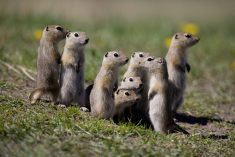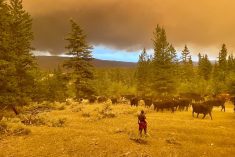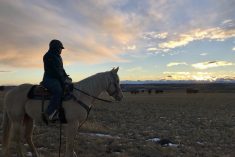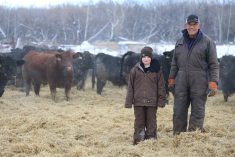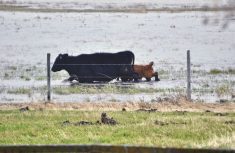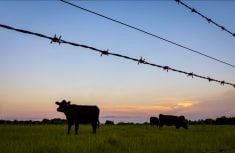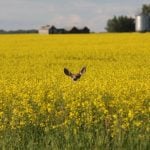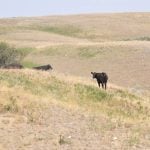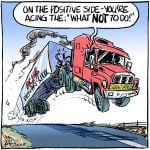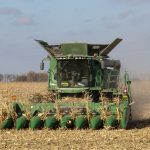A rancher in southwestern Alberta has created an innovation that allows an irrigation wheel line to perform double duty.
David Armitage, who ranches on his family’s operation at Mountain View, Alta., close to Waterton Lakes National Park, discovered that rather than continually move conventional electric fences to rotationally graze his hayland, he could work with what he already had in the field — his irrigator.
“Necessity is the mother of all invention,” said Armitage, who runs a commercial herd of about 200 cow-calf pairs. When he first tried this, he found that an extra element was needed to make it work. He originally strung electric fencing wire along the irrigator, but it wasn’t enough to deter the animals from rubbing against it and sometimes breaking parts off. “The cattle have always wrecked the wheel lines, and I’ve tried to make it so it’s not so wreckable, but usable.”
Read Also
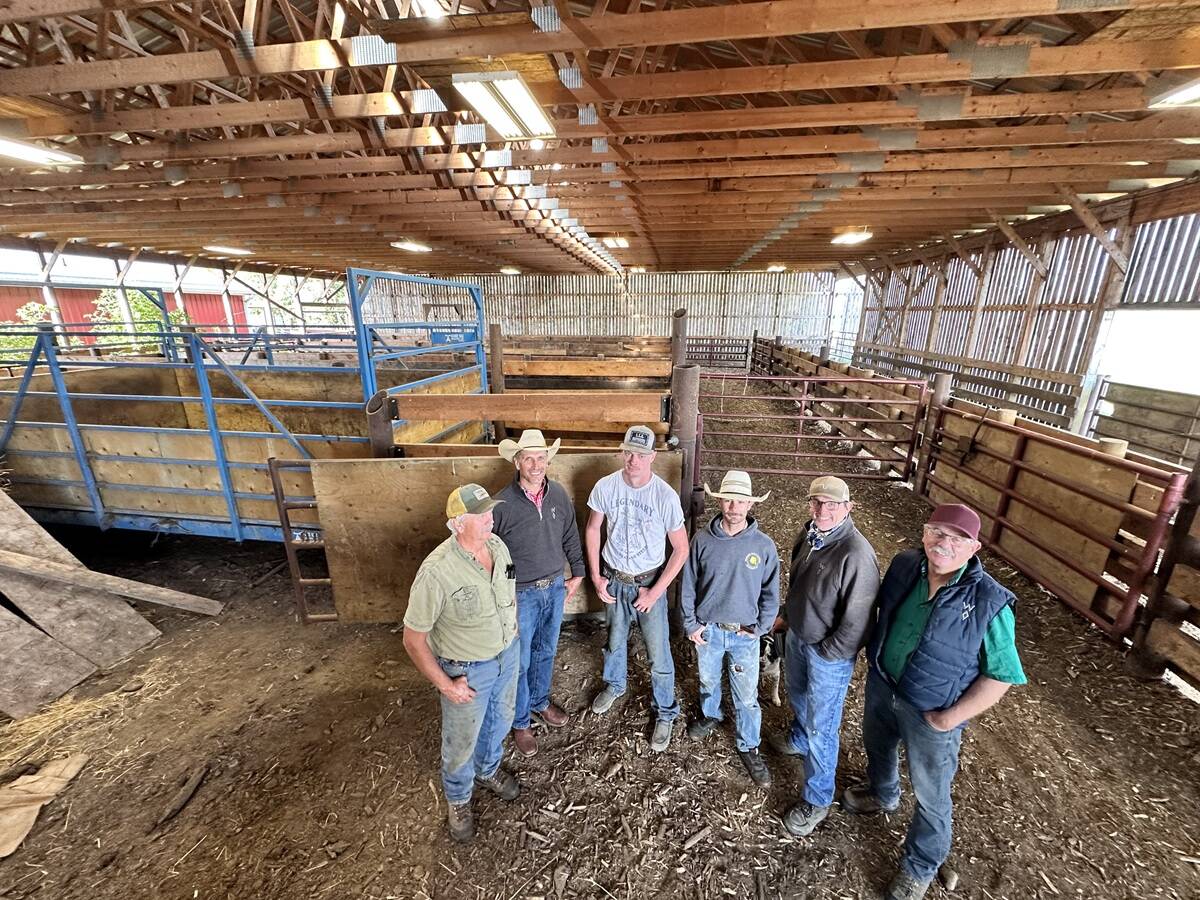
Farm families work together to graze cropland with cattle in the fall
These Alberta farm families have separate operations, but work together to manage their land
By electrifying the whole irrigator instead, Armitage successfully uses it as a portable electric fence in his 80-acre hay field and is happy with the results. “You can move it out of the way easily,” he said. “You’re doing two things at once: putting water down and making it so you have a portable fence.”
The construction is fairly simple, using thick plastic strips that are one-eighth of an inch thick to cover the bottom half of each wheel, acting as an insulator and attached with duct tape and leftover net wrap. “The wheel line functions as an irrigation system in the summertime, then when time for second cut comes we roll it to our spot, stake it down with plastic posts and put up about 25 feet of temporary fence at each end to (partition) off the field, then electrify it with a line to a strong fencer,” he explained.
“With temporary electric fence at each end, one end electrifying it and the other tied off with twine, the wheel line is one big electric progressive fence spanning the (entire) field, allowing the cows and calves to be more intensively grazed and the pasture to last longer.”

This setup allows him to move the wheel line without the hassle of taking down and reconstructing a conventional electric fence system. When it comes time to move the wheel line or begin irrigating, he removes the fence charger, making sure that when the line is in its new place the plastic on the wheels is touching the ground.
Given their location, strong winter winds are often something to contend with, so Armitage pounds plastic T-posts into the ground and wires them to the pipe to help stabilize the wheel line during the winter months.
“It is good for the land and manure is spread around by the cattle, and it is good for our machinery as mole hills are a problem. The electrified wheel line has been a big asset to make our haylands last longer and allow the cows to be on lush greens. This is our third year utilizing our wheel line as an electrified fence, and we would like to recommend the same for people in similar situations.”
For those interested in trying this concept for themselves, Armitage advises constructing it in warm weather. “If you’re going to coat the wheels with plastic, it needs to be on a warm day. All that plastic stuff works better when it’s warm out,” he said. As well, be sure that the plastic isn’t covering the sprinklers, and you’ll be set to get a second function out of your irrigator. Armitage is also interested in seeing how a manufacturing company could refine his design, particularly with regard to the insulating plastic on the wheels.




